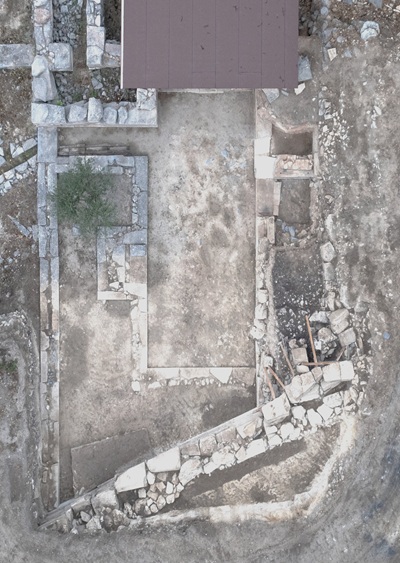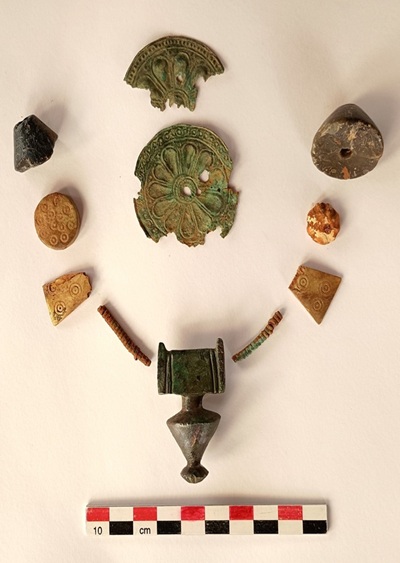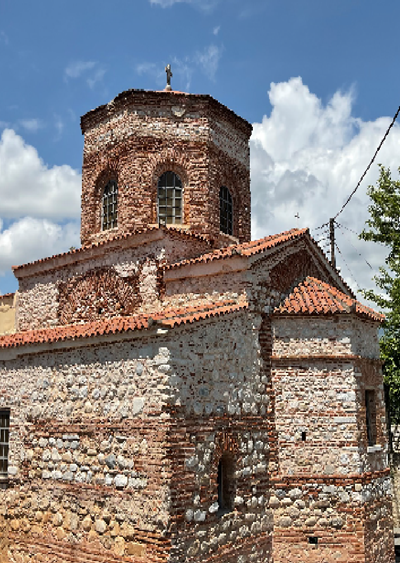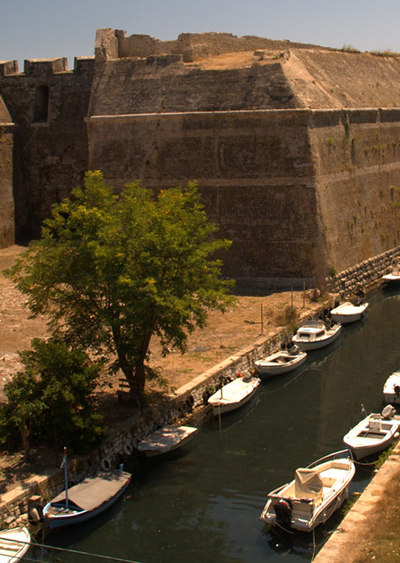
In the context of this year’s excavation period of the five-year research programme at Klidi Samikos (years 2022-2026), which was completed at the end of September, important information about the monumental structure discovered in 2022 came to light. The research project, which aims to investigate the topography of the area and to locate the sanctuary of Poseidon and the port of Samikos, is a collaboration between the Ephorate of Antiquities of Ilia and the Austrian Archaeological Institute of the Austrian Academy of Sciences, under the direction of Dr. Birgitta Eder and Dr. Erofili Kollias.
During the excavation, part of the building was uncovered and it became apparent that its dimensions are larger than the original estimate based on the geophysical survey. The total length of the structure is estimated at approximately 28 metres, and its width exceeds 9 metres. It is a 6th century BC temple with two building phases.

According to the latest evidence, it seems that this temple was a cult building within the famous sanctuary of Poseidon, which was an important religious centre of the Amphictyony of the cities of Triphylia.
It was built in the Archaic period, but seems to have been reconstructed during the second half of the 4th – early 3rd century BC and consists of two main halls, as well as a smaller one in the north-western (back) part.
The room, which was originally interpreted as a pronaos, turned out to be one of the halls of the cella, in which the bases of two columns of a colonnade were found on the axis of the building, belonging to the Archaic phase. We can assume that there were similar columns in the second room. In any case, the floor plan of the temple is unusual, with no precise parallel.

The function of the two main spaces is still unclear. Perhaps two deities were worshipped, or the second hall could have served as the seat of the amphictyony. During the reconstruction of the temple, the tiles of the old roof were reused, as they were laid evenly as a substrate for the new flooring.
The archaeological research is funded by the Gerda Henkel Foundation and the Austrian Archaeological Institute of the Austrian Academy of Sciences and the geophysical research is carried out by a research team of the University of Kiel, while the geoarchaeological investigation is carried out by researchers of the University of Mainz.
In the coming years, the team plans to continue researching the site to find more evidence of the extent and form of the sanctuary.







Leave A Comment